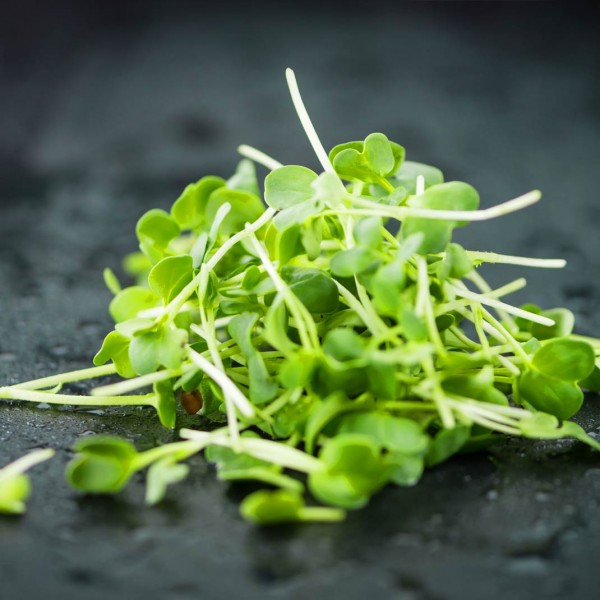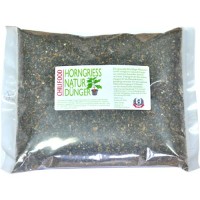Cookie preferences
This website uses cookies, which are necessary for the technical operation of the website and are always set. Other cookies, which increase the comfort when using this website, are used for direct advertising or to facilitate interaction with other websites and social networks, are only set with your consent.
Configuration
Technically required
These cookies are necessary for the basic functions of the shop.
"Allow all cookies" cookie
"Decline all cookies" cookie
CSRF token
Cookie preferences
Currency change
Customer-specific caching
Individual prices
PayPal payments
Selected shop
Session
Comfort functions
These cookies are used to make the shopping experience even more appealing, for example for the recognition of the visitor.
Matches only with "acrisCookie"
Note
Statistics & Tracking
AWIN Affiliate Marketing
Affiliate program
Track device being used

Healthy, healthier - watercress The tasty watercress variety with lots of nutrients... more
Vegetable patch for beginners
Healthy, healthier - watercress
The tasty watercress variety with lots of nutrientsWatercress is not only perfect for planting in damp, shady beds, your water area at the herb snail or by the pond and near streams. The beautiful flower is also edible and full of valuable nutrients that strengthen our immune system, including vitamins A, C and E as well as calcium and potassium. In addition, the colourful flowers are an absolute eye-catcher on any summer salad that you can surprise your guests with.
Location
Watercress naturally thrives in small rivers and streams that are shaded or semi-shaded and have clear water. This can be transferred 1:1 to cultivation in the garden. Watercress only really thrives if it is grown directly at the end of a herb snail with a water basin, at a clean pond, stream or small fountain with a shallow basin, which is ideally in the shade or partial shade.
Sowing
Watercress should always be sown in advance, because if the seeds are sown directly, there is a risk that the flow of water will take all the seeds with it and no plant will emerge in the end. However, as the seeds already require a lot more water, they need to be well cared for. To provide the seeds with a good environment, a drainage layer of gravel should be placed in the planter and the substrate on top should consist of a mixture of peat-free soil and sand. The planter should now be placed in a larger container and filled with fresh, clear water, which should be changed every 2 days. At temperatures of around 20°C, the seeds will start to germinate after just one week. Once the small plants have reached a height of around 8-10 cm, they can be planted outdoors in a suitable place.
Care
If the watercress is in a comfortable spot outdoors, it hardly needs any care, as the flowing water provides sufficient nutrients to help the plant grow. If you see several dried shoots on the plant, you can cut them off. It is important not to cut off any of the roots, as the plant does not like this. If the plant stops growing or even dies, it clearly shows the gardener that there is little or no oxygen left in the water, as only oxygen-rich water will allow watercress to thrive.As watercress is hardy, it should be ensured that the plant is also supplied with sufficient oxygen-rich water in winter or, in the best case, that the stream continues to run.
Protection against pests and diseases
The pungency of the plant and the mustard oils it contains make it virtually resistant to all diseases and pests. If a snail does invade, it quickly loses its appetite. Insect larvae, such as dragonfly larvae, can also be found in watercress. If you want to harvest and find larvae, you should move them to another similar place, as the larvae will not damage the plant.
Harvest
Watercress leaves can be harvested from a plant size of around 10 cm. However, if you want to be sure that the plant has already settled in, you should wait at least 1-2 weeks after planting it in the water before harvesting. When the watercress flowers, the leaves lose their flavour, so the best time to harvest is always before flowering. But of course the colourful flowers can also be harvested to add a highlight to a delicious summer salad.
Read, write and discuss reviews... more
Customer evaluation for "Vegetable patch for beginners"
Write an evaluation
Evaluations will be activated after verification.
Know How and Products

Info: `Curled Leaf` Cress has all the attributes of the plain leaf variety but with a slightly smaller, more serrated leaf pattern and a slightly more delicate flavour. You only need water, a little warmth, and light, and this...
Content 500 Stück (€0.00 * / 1 Stück)
€2.39 *

Elegant design meets functional use. Juicy tomatoes, crunchy cucumbers, fine salads or spicy herbs - with the BoQube growing tray S anthracite from Romberg , you can become a passionate (city) gardener even if your gardening space...
Content 1 Stück
€10.49 *

For healthy and vigorous plants. Horn meal is a quickly available and great source of nitrogen for your organic plants. It is the standard in organic farming and thus the perfect fertilizer for all vegetables, fruits and...
Content 1 Kilogramm
€3.99 *

Info: Nasturtium Peach Melba is a pretty variety with light yellow flowers, whose red spots offer a nice contrast to the light green foliage. The variety is ideal as a tub and balcony plant, but also as a ground cover. All...
Content 5 Stück (€0.48 * / 1 Stück)
€2.39 *

24 Bio-degradable Pots made of PEFC-certified cellulose, 100 % peat free, for simple and successful seed propagation. Thats how you can take care of our precious natural resources. The roots of the plants can easily grow through...
Content 24 Stück (€0.15 * / 1 Stück)
€3.59 *

Practical 3-piece transplanting set This set includes all the small tools you need to grow your plants. A hand dibber to transplant the little plants in their own pots, a small rake to loosen the soil and a mini spade.
Content 1 Stück
€5.75 *

Info: Greek Cress is a variety of garden cress that has a more pronounced, sweet nutty flavour with a slightly spicy kick and lingering peppery taste. The plant exhibits a compact growth of dark green, flat dissected leaves. It is...
Content 500 Stück (€0.00 * / 1 Stück)
€2.39 *

Rootmaster mini greenhouse for easy indoor growing. This greenhouse is ideal for growing indoors. With the watering function, all you have to do is add water to the container and wait for the plants to germinate. When the roots...
Content 1 Stück
€29.90 *

Propagation box - ideal mini greenhouse for your propagation. This propagation box offers you space for 49 individual seeds and is very suitable for pre-cultivation until you can put your plants outdoors. The box is a 3-piece...
Content 1 Stück
€24.25 *
Themes
Viewed








